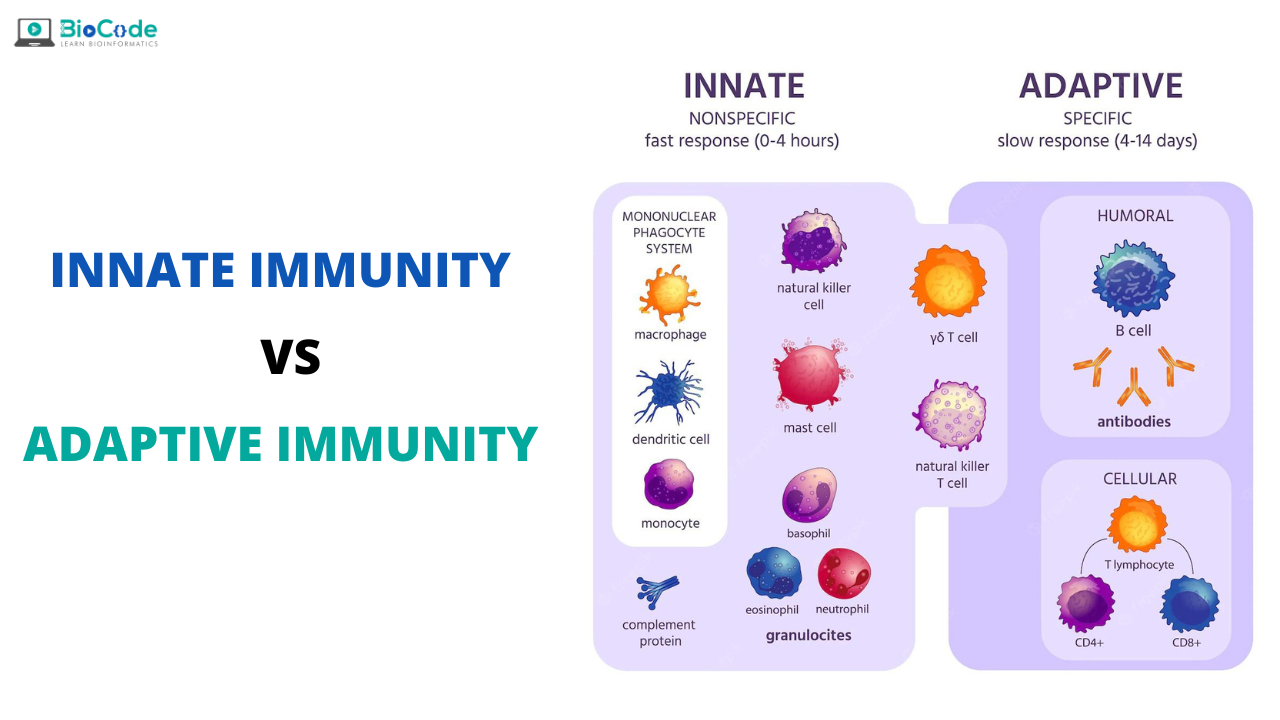Innate Immunity:
Innate immunity consists of the defenses against infection that are ready for immediate action when a host is attacked by a pathogen (viruses, bacteria, fungi, or parasites). The innate immune system includes anatomical barriers against infection—both physical and chemical as well as cellular responses.
Physical Barriers:
The main physical barrier which is the body’s first line of defense are the epithelial layers of the skin and of the mucosal and glandular tissue surfaces connected to the body’s openings. These epithelial barriers prevent infection by blocking pathogens from entering the body.
Chemical Barriers:
Chemical barriers at these surfaces include specialized soluble substances that possess antimicrobial activity as well as acid pH. Pathogens that breach the physical and chemical barriers due to damage to or direct infection of the epithelial cell layer can survive in the extracellular spaces (some bacteria, fungi, and parasites). They can infect cells (viruses and some bacteria and parasites), eventually replicating and possibly spreading to other parts of the body. Skin secretes psoriasin, an antimicrobial protein that kills E. coli. Fingertips of a healthy human were inoculated with Staphylococcus aureus (S. aureus) and E. coli. After 30 minutes, the fingertips were pressed on a nutrient agar plate and the number of colonies of S. aureus and E. coli determined. Almost all the inoculated E. coli were killed; most of the S. aureus survived.
The cellular innate immune responses:
The cellular innate immune responses to invasion by an infectious agent that overcomes the initial epithelial barriers are rapid, typically beginning within minutes of invasion. These responses are triggered by cell surface or intracellular receptors that recognize conserved molecular components of pathogens. Some white blood cell types (macrophages and neutrophils) are activated to rapidly engulf and destroy extracellular microbes through the process of phagocytosis.Other receptors induce the production of proteins and other substances that have a variety of beneficial effects, including direct antimicrobial activity and the recruitment of fluid, cells, and molecules to sites of infection. This influx causes swelling and other physiological changes that collectively are called inflammation. Such local innate and inflammatory responses usually are beneficial for eliminating pathogens and damaged or dead cells and promoting healing.
Key elements of innate immunity include the physical and chemical barriers that prevent infection, provided by the epithelial cell layers of the skin, mucosal tissues (e.g., gastrointestinal, respiratory, and urogenital tracts), and glandular tissues (e.g., salivary, lacrimal, and mammary glands).
Once pathogens enter the body, such as through a breach in an epithelial layer, they are confronted by an array of cells with cell surface and intracellular receptors that recognize pathogen components and trigger a variety of cellular responses. Pathogen recognition by these receptors activates some cells to phagocytose and degrade the pathogen, and many cells are activated through their receptors to produce a variety of antimicrobial substances that kill pathogens, as well as cytokine and chemokine proteins that recruit cells, molecules, and fluid to the site of infection, leading to swelling and other symptoms collectively known as inflammation. The innate natural killer (NK) cells recognize and kill some virus-infected cells. Cytokines and chemokines can cause systemic effects that help to eliminate an infection, and contribute—along with dendritic cells that carry and present pathogens to lymphocytes—to the activation of adaptive immune responses.
Adaptive Immunity:
Some pathogens may evade the innate defenses. On call in vertebrates is the adaptive immune system, which counters infection with a specific tailor-made response to the attacking pathogen. This attack occurs in the form of B and T lymphocytes. They generate antibodies, and effector T cells that specifically recognize and neutralize or eliminate the invaders.
Types of adaptive immunity:
In humoral immunity, B lymphocytes secrete antibodies that eliminate extracellular microbes.
In cell-mediated immunity, different types of T lymphocytes recruit and activate phagocytes to destroy ingested microbes and kill infected cells.
Response time of innate immunity is fast while adaptive immunity takes time to be activated.
Innate immunity is not very specific and diverse while adaptive immunity is very specific and diverse.
Major cells of innate immunity are macrophages, monocytes, natural killer cells and monocytes while adaptive immunity have T lymphocytes, B Lymphocytes and antigen presenting cells.

